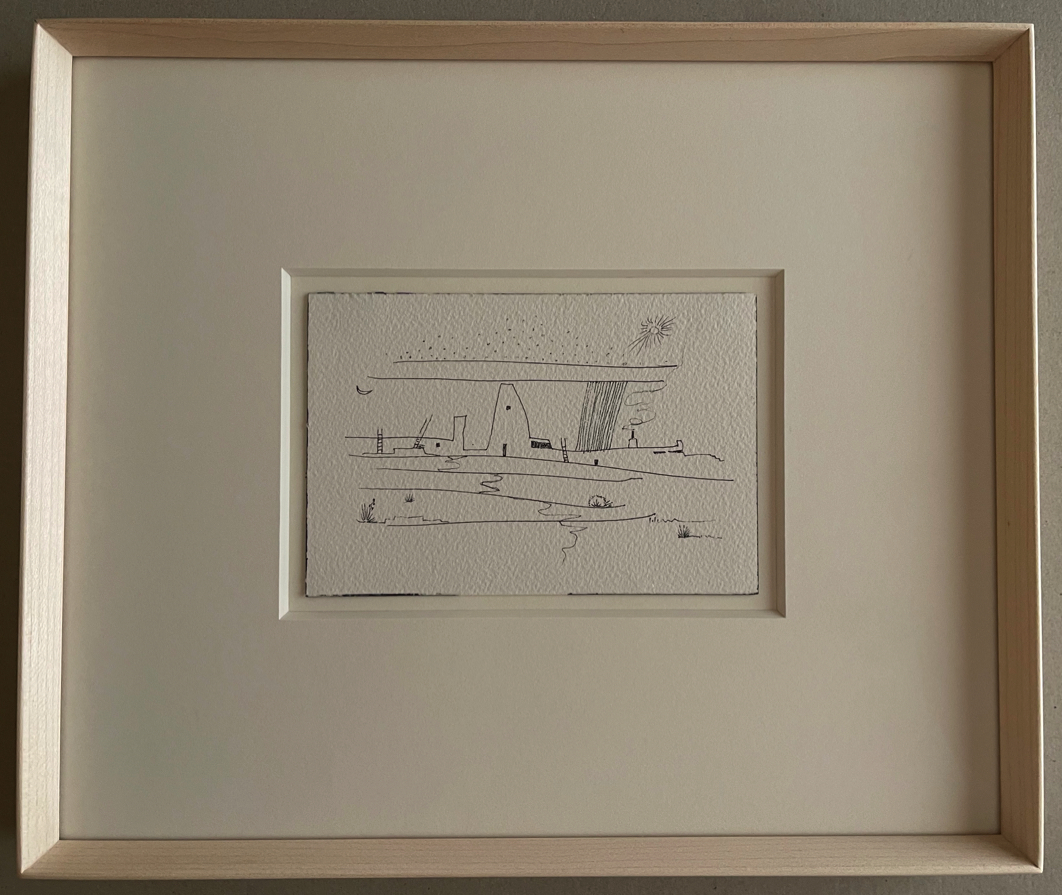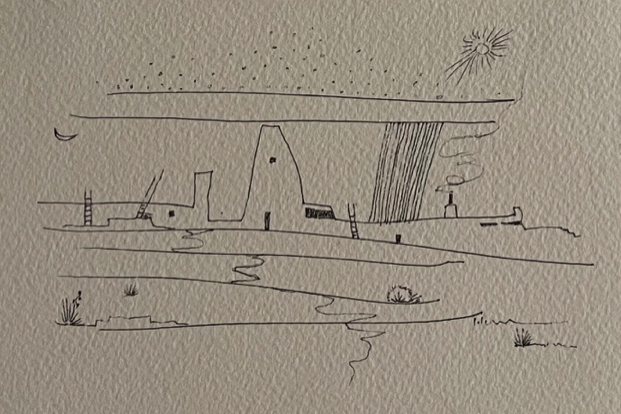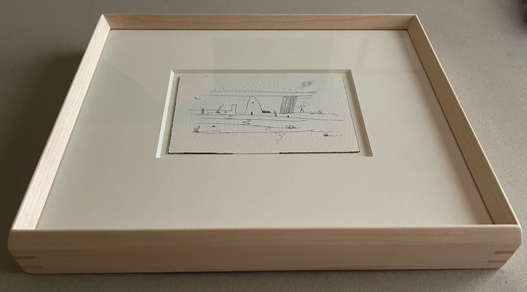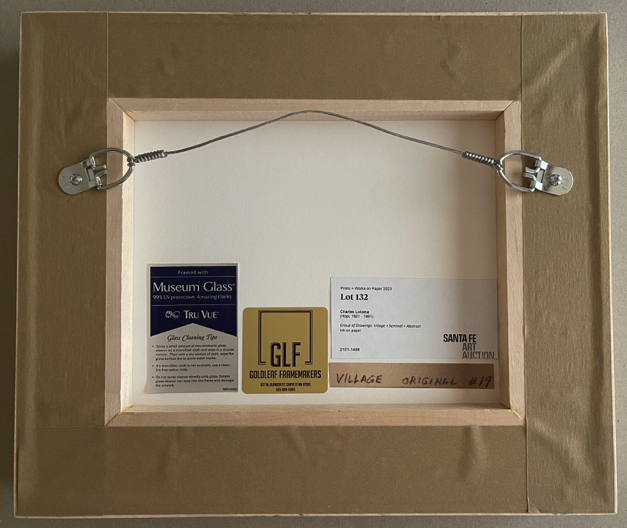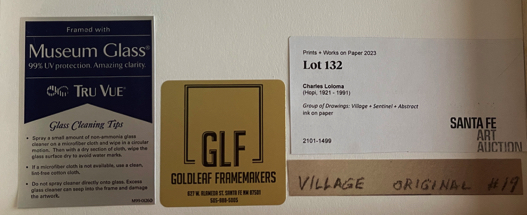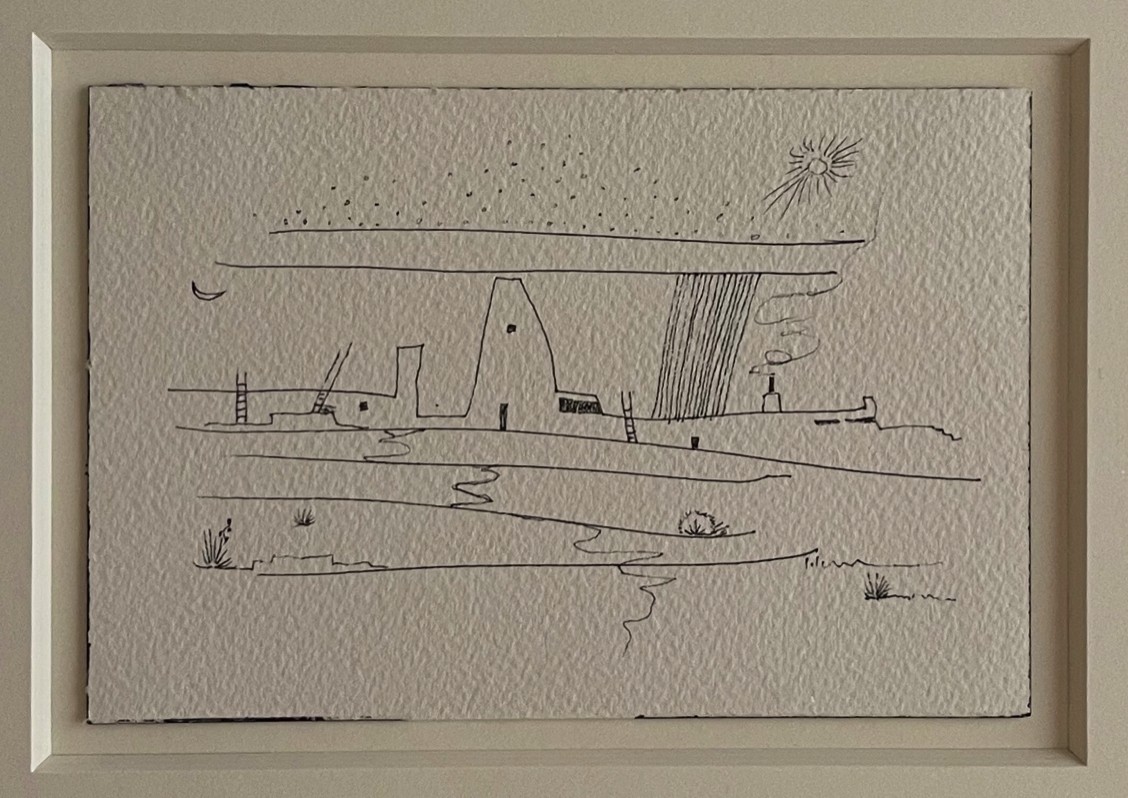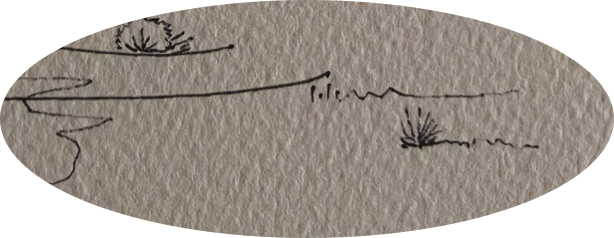
© 2010-2023 by Fine Arts of the Southwest, Inc. All rights reserved.
Unauthorized reproduction or use is strictly prohibited by law.
A beautiful, original Hopi ink on Arches paper drawing
of a stylized Pueblo village by Charles Loloma, c. 1980
Ex: Charles Loloma Personal Collection
It’s relatively little known today, but the world-renowned Hopi jewelry artist Charles Loloma (1921-1991) actually began his long artistic career as a young teenager in the late 1930’s working as a painting assistant for the great Hopi artist and educator, Fred Kabotie (1900-1986). The young Loloma had been recognized by Kabotie at an early age as something of an artistic prodigy and in this capacity, he helped paint a beautiful series of large Hopi Kachina murals for the landmark Golden Gate International Exposition on Treasure Island in San Francisco Bay in 1938-39 several of which are pictured here.
Another of Loloma’s early Kachina murals, formerly from The Hopi High School, is presently on display in the permanent collection of The Heard Museum in Phoenix, AZ as shown below. Loloma’s fine artwork is little known as well because in general his abstract and figurative paintings and drawings have very seldom been publicly seen until quite recently, but truth is Charles Loloma could hold his own with the very best of America’s and Europe’s great Modern painters; Picasso, Miro, Kandinsky, de Kooning, Rothko, Pollock, Kline etc.
An early Charles Loloma Kachina mural formerly in The Hopi High School now on display at The Heard Museum in Phoenix, Arizona.
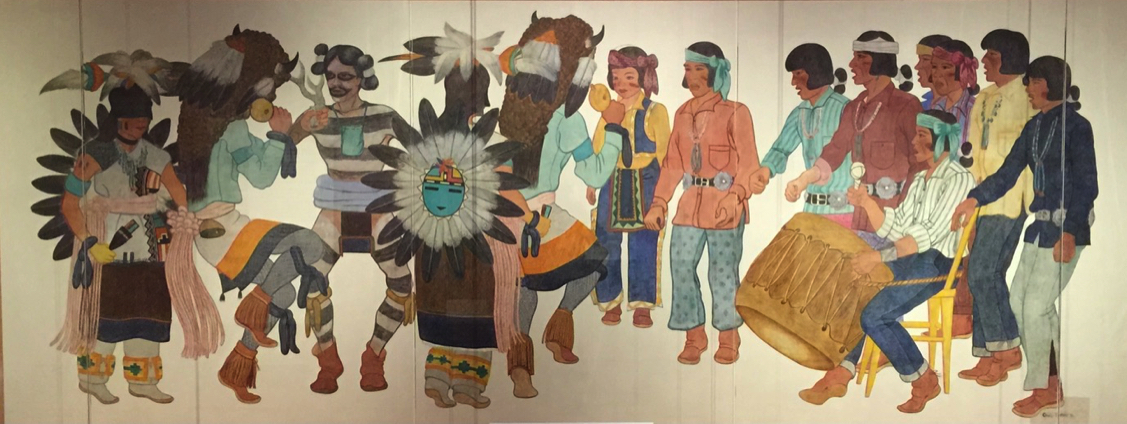
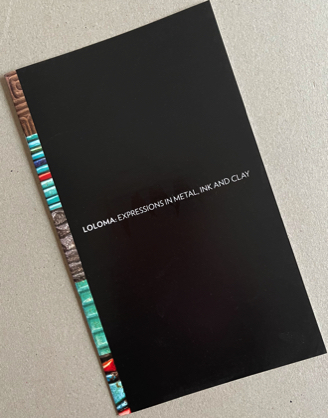
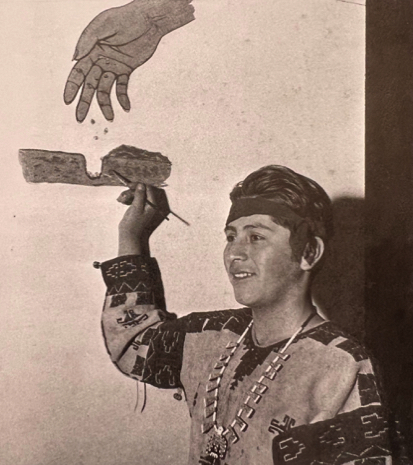
At left, eighteen year-old Charles Loloma in one of the Indian Court galleries of the Federal Building, Golden Gate International Exposition, San Francisco, 1939. At right, Charles Loloma’s Hopi kachina paintings on display at the 1939 Golden Gate International Exposition in San Francisco.
Left and right photo source and © Denver Art Museum, Native Arts Department. Left photo reproduced in "Loloma, Beauty is His Name", by Martha Hopkins Struever, Wheelwright Museum, Santa Fe, 2005, pp. 5.
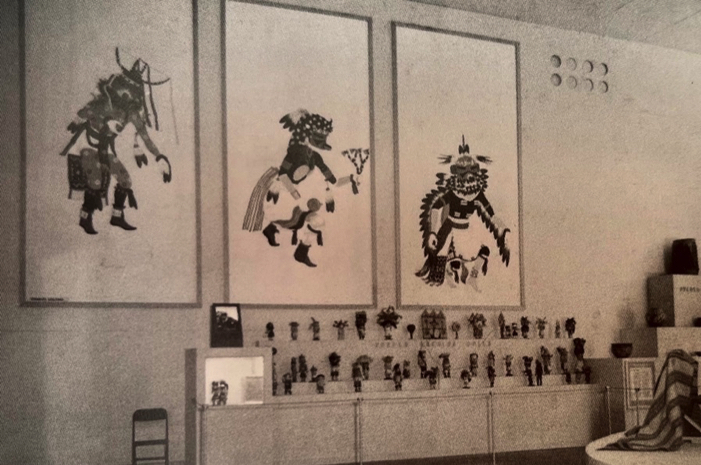
Above left and right, some of Charles Loloma’s abstract drawings on display in The Heard Museum, Phoenix, AZ, 2015. At center, The Heard Museum's catalog of the exhibition, "Loloma: Expressions in Metal, Ink and Clay", 2015.
"Charles Loloma was a Hopi man. The sacred landscape of his life and death is the ancient world of Hopi; his life was of its life, his spirit of its spirit. From that world he came, into it he returned. From his first breath to his last, he was true to it."
-Author, N. Scott Momaday, from his 1991 eulogy of Charles Loloma
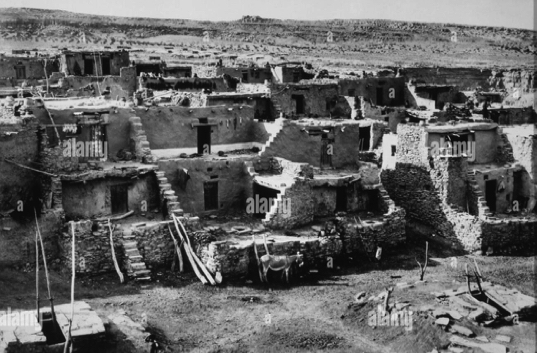
View of Old Oraibi Village, c. 1910.
Photo source and © Alamy Stock Photos
The drawing is most beautifully and archivally island matted to display the entire paper sheet and is framed under “TruVue” conservation “Museum” glass in a finely hand-carved and beveled light maple wood frame crafted by Goldleaf Framemakers
of Santa Fe, Santa Fe’s finest fine art framers. The drawing’s sight size is 4” in height and 6“ in width and the framed dimensions are 11 1/8" in height and 13 1/8" in width. The drawing is in excellent original condition and particularly so given its forty-plus years of age. The drawing is properly signed “Loloma” at the lower right in a lovely signature quite similar in appearance to Loloma’s jewelry signature. The drawing is also titled "Village Original #19" in pencil in Charles Loloma's hand on the verso.
The drawing has an absolutely letter-perfect provenance having come directly from the personal private collection of Charles Loloma himself and his second wife Georgia Voisard Loloma. That Loloma kept this drawing for years after he made
it and for the rest of his life says quite a lot about how much he valued the piece and how much it meant to him. After Charles’ death in 1991 the drawing passed to Georgia Loloma and after her death in 2021 we acquired it from her estate.
This drawing is a rare, fresh and lovely original piece from the skilled hands of, and a direct and intimate personal connection to, one of America’s greatest Modern artists, who in his day job also happened to be one of the world’s
most remarkable and most innovative jewelers of all time.
Price $2,350
In addition to his already highly-accomplished painting skills, Loloma went on to undertake a serious study of ceramics in
the late 1940’s and, along with his first wife, Otellie Pasiyeva Loloma, became a distinguished professional art pottery maker. Only starting in the very late 1940’s and early 1950’s did Loloma begin his initial experimentations with jewelry-making which would eventually become his defining artistic career and legacy, yet through it all he kept on making drawings; of stylized Hopi village scenes such as this one, of landscapes, architectural renderings, personal and other portraits and occasionally, of Hopi kachina figures. There is no solid evidence that Loloma ever sold his drawings in any
type of commercial manner or venue, however, he mostly made them for himself or gave them as gifts to various friends, colleagues and family so in the marketplace they are quite scarce and very difficult to come by.
The fact that he basically lived a million miles from the world’s contemporary art centers in remote, dusty, tiny Hotevilla, Arizona in the far reaches of the Hopi Indian Reservation contributed to this relative obscurity although throughout the 1970’s and ’80’s he had plenty of jewelry shows held regularly at important Southwestern and California galleries and never once to our knowledge held a show of his marvelous and completely unique original drawings. To our knowledge, the only occasion on which a sizable number of Loloma’s drawings had ever been exhibited until quite recently was at The Heard Museum in Phoenix, Arizona which staged a wonderful exhibition of Loloma drawings along with jewelry and pottery pieces
in 2015 entitled "Loloma: Expressions in Metal, Ink and Clay".
And not only are they extremely rare, Loloma’s drawings are simply remarkable in their breathtaking quality and beauty.
We have had only a relatively small number of them in all over the past 35-plus years and in our opinions this is one of the most interesting ones we have had yet. This drawing is done in fine black ink on beautifully-textured French Arches paper,
the famed “Moulin D’ Arches”, one of the world’s finest handmade artist’s papers. The composition is of a stylized Hopi village scene complete with buildings, ceremonial Kivas, Kiva ladders and a wonderful somewhat fanciful depiction of a sunny sky above a layer of clouds with rain falling underneath and a sun and moon and stars hanging in the sky. Loloma’s command of the line is simply extraordinary and there is a unique freshness, vitality and spontaneity to the piece as if he suddenly had the idea, sat down and dashed it off in fifteen inspired minutes, a beautiful thought that just came right out perfectly and fully realized, a polished and sophisticated presentation. The feeling here is timeless, ancient, lovely and somewhat otherworldly, at once harmonious and peaceful and somewhat whimsical.
